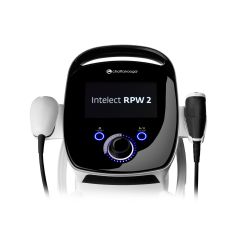Short-and Intermediate-Term Results of Extracorporeal Shockwave Therapy for Noninsertional Achilles Tendinopathy
Nasr Awad Abdelkader, Mohamed Nasser Kise Helmy, Nadia Abdelazem Fayaz, Emad S. B. Saweeres
Published in: Foot & Ankle International, 2021, http://doi.org/10.1177/1071100720982613
This study was conducted to determine the effectiveness of adding extracorporeal shockwave therapy (ESWT) to conventional conservative physical therapy for treating chronic noninsertional Achilles tendinopathy (NAT).
Fifty patients with a diagnosis of chronic NAT were enrolled in the study. Patients were randomized into 2 groups:
- ESWT + Conservative Physical Therapy
- Sham ESWT + Conservative Physical Therapy
Conservative physical therapy consisted of eccentric training and stretching for 4 weeks. During the same 4 weeks, patients received ESWT or sham ESWT once per week.
ESWT was performed with a radial pressure wave device. Parameters for each session were 2000 pulses, 3 bar, 8 Hz. Sham ESWT was conducted in a similar fashion but no energy was emitted from the device.
Patient function and pain were assessed using the Victorian Institute of Sport Assessment-Achilles questionnaire (VISA-A) and the visual analog scale (VAS), respectively. Patients completed the VISA-A and VAS at baseline, 1 day after treatment ended, and then approximately 16 months after baseline for a long-term outcome assessment.
Both groups had significant improvement in function and pain after 4 weeks of treatment. However, the ESWT group had significantly more improvement compared to the sham group. The median pain score decreased by 87.5% in the ESWT group and by only 12.5% in the sham group.
Both groups also had significant improvement in function and pain at the long-term follow-up. Despite an increase in pain score and decrease in functional score compared to post-treatment, the ESWT group continued to have significantly better outcomes compared to the sham group at 16 months.
The study concludes that combining ESWT with eccentric training and stretching results in significantly better outcomes for patients in the short term. This is demonstrated by the median pain score for the ESWT group decreasing by 75% more than the sham group post-treatment.
This study also demonstrates that the positive clinical effects of ESWT continue to be seen out to 16 months.
The authors strongly recommend adding ESWT to the treatment plan for patients with NAT.

